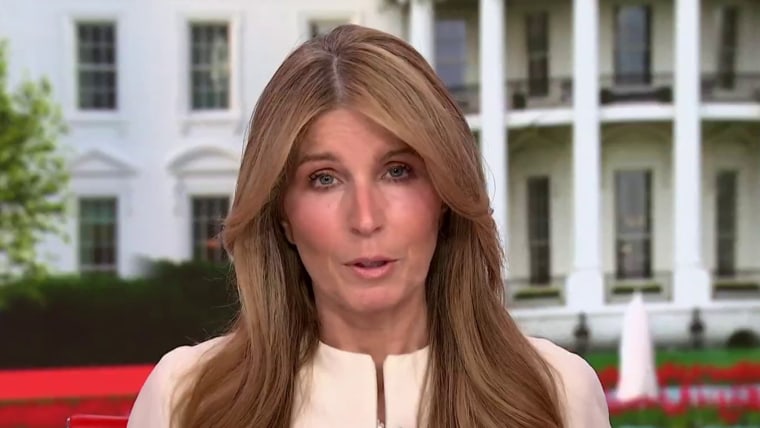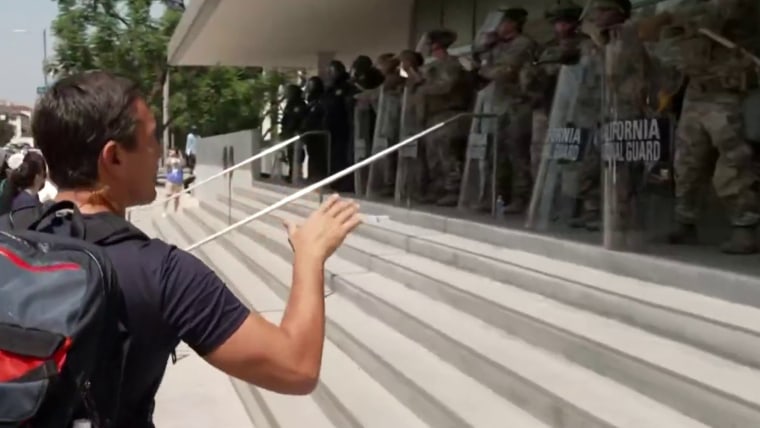President Donald Trump’s unilateral actions deploying at least 2,000 National Guard members to downtown Los Angeles this weekend — contrary to the stated desire of California Gov. Gavin Newsom — has appropriately raised serious concerns regarding federalism, authoritarianism and politicization of our armed forces. While the use of the U.S. military on American streets isn’t new, from disaster response following Hurricane Katrina to helping Los Angeles quell its 1992 riots, Trump’s militarization of the already tense situation in Los Angeles is unprecedented. Moreover, the move threatens to exacerbate tensions instead of lessen them.
Trump’s militarization of the already tense situation in Los Angeles is unprecedented.
Trump’s order is unlike other domestic uses of the military because the American norm revolves around states. States are primarily responsible for the safety of their city streets, with governors requesting help from the federal government only when needed. During one of the worst U.S. civil disturbances outside the Civil War, for example, then-California Gov. Pete Wilson asked President H.W. Bush for federal military assistance during the 1992 L.A. riots.
Presidents have only rarely bypassed governors and, without their consent, commanded federal military assets (both active duty military and federalized National Guard units) to deal with domestic unrest, largely during the Civil Rights Movement (the last time governors were cut out of the picture was in 1965, when President Lyndon B. Johnson federalized members of the National Guard to protect civil rights protesters marching from Selma to Montgomery).
In stark contrast, instead of protecting protestors, Trump federalized the National Guard this past weekend without Newsom’s support, which risks squashing First Amendment-protected protests against his administration’s draconian immigration dragnet, thereby throwing gasoline on an already volatile situation. Trump claimed this was necessary to protect federal agents and property from a “rebellion” in Los Angeles, even though Newsom and Los Angeles Mayor Karen Bass were effectively using the Los Angeles Police Department, state Highway Patrol and the L.A. County Sheriff’s Department at the time to deal with sporadic violence associated with what began as largely peaceful protests.
Critically, from the start of these protests Newsom had the authority to deploy his own California National Guard units to assist local L.A. law enforcement personnel if needed; like all governors, he could specifically order members of his National Guard to engage in policing, including arrests, searches and seizures. This powerful domestic law enforcement authority of National Guard units working for their governor is critically important and represents a huge distinction between guard and active duty units.

Unlike in the active duty military, domestic law enforcement is a traditional role for states’ National Guard units. As citizen soldiers tracing their roots to state militias at the time of the Revolutionary War, members of the National Guard working for their governor are not seen as the same threat to democracy that federal troops have been. The National Guard’s role in the U.S. democratic schema is unique; guard units across the country work first and foremost for their governors in both domestic law enforcement and disaster response capacities. The president can also call them up to federal service, under the Pentagon’s command and control, to fight foreign wars, to assist in repelling invasion or rebellion, and to help execute federal law. Traditionally, when used domestically, National Guard units typically continue to fall under the command and control of their governor (or are federalized only at the request of the affected governor), except in the very rare cases not seen since the 1960s, like during the desegregation of the high school in Little Rock, Arkansas.
This distinction between the National Guard, who work primarily for their state governors, and the active duty military and reserves is a critical one and reveals a historic mistrust of federal troops (as opposed to the National Guard) being used on American streets. Alexander Hamilton expressed one of our Founding Father’s greatest fears — that the U.S. military, while necessary for a strong union, could be used by a tyrannical president against “we the people,” thereby replacing democratic power with authoritarian rule. This fear focused on the active duty military, not the militias (today’s guard) embedded day in and day out in their towns and villages.
Alexander Hamilton expressed one of our Founding Father’s greatest fears — that the U.S. military, while necessary for a strong union, could be used by a tyrannical president against “we the people."
This deep American aversion to federal troops being deployed on our city streets is legally manifested in the Posse Comitatus Act, which prohibits active-duty military — and National Guard units when working for the president, therefore indistinguishable from active duty troops — from law enforcement (policing) duties, unless expressly authorized by other law. Traditionally, that exception has been the use of another venerable federal law — the Insurrection Act.
Notably, while Trump has lawfully federalized National Guard troops under a separate statute that allows him to do so in case of invasion or rebellion or to execute federal laws — one that seemingly vests in him the discretion to decide when such rebellion is present or law execution is needed — he has not concomitantly invoked the Insurrection Act. Meaning the California National Guard troops that the governor could have deployed to engage in policing in Los Angeles cannot now legally engage in such activities, because they work for the president and are barred from law enforcement until the Insurrection Act is invoked.
Given the lack of Insurrection Act invocation, it’s no wonder the president’s order stresses that the National Guard will engage in protective activities only, with no mention of law enforcement. Yet protective functions could easily transform into the need to engage in law enforcement. By inflaming tensions by sending in federal troops (the guard units deployed to L.A. are indistinguishable from active duty troops now that they are federalized, though far better trained in law enforcement than active duty units), Trump may have created the need to invoke the Insurrection Act, thus allowing him to order not only the National Guard, but also active duty troops to police the streets of Los Angeles.
Trump’s order to federalize the California National Guard seems lawful under the broad discretion of the statute used (though it requires that orders to federalize flow through the governor, which the Trump administration has largely ignored). Yet Trump’s actions — including a possible Insurrection Act invocation — run contrary to the historical use of these powers. They instead represent not only a dangerous escalation for those on the ground, but a dangerous precedent in the abuse of the armed forces for political ends, and a dangerous move for those on the streets of Los Angeles.
